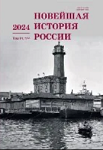Формирование государственной системы социального обеспечения в Кабардино-Балкарии в начале 1920 х гг.
Formation of the State Social Provision System in Kabardino-Balkaria in the Early 1920s
Author(s): Z. Kh. Soblirova, A. A. Zhurtova, A. A. KonovalovSubject(s): Public Administration, Government/Political systems, Politics and society, Interwar Period (1920 - 1939), Labour and Social Security Law
Published by: Издательство Исторического факультета СПбГУ
Keywords: social security; Soviet power; pension; peasantry; mutual aid committees; Soviet Russia;
Summary/Abstract: The systemic transformation of society in the first years of Soviet power was associated with the creation of favorable living conditions for lower social strata. The state was faced with the task of building a social security system throughout the country. The study of the regional aspect is of particular relevance, because the processes planned at the center acquired their final form on the ground, transforming under the influence of national characteristics. The formation of social security bodies begins in Kabardino-Balkaria in the early 1920s. The processes of nation-state and cultural construction were underway simultaneously. After the end of the Civil War, a whole set of problems related to the need to restore destroyed agriculture, create large-scale industrial production, and workers emerged. The special mentality of the mountaineers prevented the perception of new forms of government, and government bodies and public organizations found it difficult to fit into everyday life. Insufficient funding and lack of qualified specialists complicated the organizational development of social security bodies. Despite the difficulties, in 1920 a social security department was organized in Nalchik. It began to provide targeted assistance to those in need, shelters for orphans, homes for the disabled and the elderly were opened; pensions and benefits began to be paid. Measures were taken to protect motherhood and childhood, homeless children were placed under guardianship, they were placed in specialized homes, in families, and provided with everything they needed. In 1921–1922 social security funds were used to create peasant public mutual assistance committees, which continued the practical implementation of social activities. The set of measures led not only to an improvement in the financial situation of the mountain population, but also to an increase in the authority of the new government.
Journal: Новейшая история России
- Issue Year: 14/2024
- Issue No: 49
- Page Range: 953-967
- Page Count: 15
- Language: Russian

